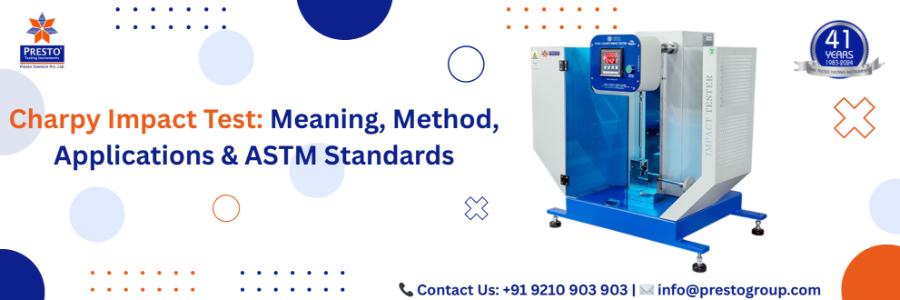

The Charpy Impact Test is a basic but powerful technique used all over the world to measure how tough different materials are. In industries where structural strength really matters—like in cars, planes, and buildings—-this test is super important. It was developed back in 1905 by Georges Charpy, and it's still being used today because it's simple and it works.
In this guide, we'll explain how the test works, why it matters, and what it tells us. We’ll also compare it with the Izod test and share where it’s most useful.
The Charpy test was first introduced by Georges Charpy, a French scientist, in 1905. It was designed to quickly show how tough a material is when hit suddenly. Even after more than 100 years, it’s still one of the most trusted ways to check material toughness.
The Charpy Impact Test checks how much energy a material can absorb when it breaks from a sudden blow. This tells us whether a material will crack or bend when hit.

A small, notched sample is hit by a pendulum hammer, and the energy used to break it is recorded. It’s really helpful for checking how materials react in cold weather, when they often become more brittle.
A Charpy impact tester uses a swinging pendulum that hits a notched bar of material supported at both ends. The energy absorbed by the specimen during fracture is recorded—typically in joules.
The test setup consists of:
After the impact, the height to which the pendulum swings is reduced. The difference in height before and after the impact allows the calculation of absorbed energy using the conservation of energy principle.
.jpg)
.jpg)
Advanced models also allow temperature-controlled testing to evaluate material behavior under different environmental conditions.
Energy is calculated like this:
E = m × g × (h1 - h2)
Where:
It’s a simple formula, but it gives good results if the machine is calibrated right.
.jpg)
Results can look really different depending on what kind of material you test:
This helps companies pick the right material depending on where and how it will be used.
Charpy is a destructive test. That means the sample breaks and can’t be used again.
Destructive Tests:
Non-Destructive Tests:
Destructive tests are great during product development or when picking materials. NDT is better for finished products.
These two results give a full picture of what happened.
The folks at ASTM (American Society for Testing and Materials) set the rules to keep things consistent. The big one is:
Other standards to know:
These standards make sure everyone’s on the same page, whether you’re testing in New York or New Delhi.
You might’ve heard of the Izod test, which is like the Charpy test’s sibling. They both measure toughness, but they’ve got some key differences. Here’s a quick rundown:
| Feature | Charpy Impact Test | Izod Impact Test |
| Sample Position | Lies flat, supported at both ends | Stands upright, clamped at the bottom |
| Notch Direction | Notch faces away from the hammer | Notch faces the hammer |
| Main Standard | ASTM E23 | ASTM D256 |
| Common Materials | Metals like steel | Plastics and composites |
| Energy Range | Higher (150–300 joules) | Lower (up to 124 joules) |
Charpy is the go-to for metals, while Izod is more common for plastics. Both are awesome, but they’re tailored for different jobs.
The Charpy Impact Test is still widely used because it’s fast, reliable, and gives clear results. If you work in cars, planes, construction, or material science, this test is a must-have.
Need a Quality Charpy Impact Tester?
Talk to Presto Group – Experts in advanced testing instruments offering the best Charpy Impact Tester price in the industry.
Call: +91 9210 903 903
Email: info@prestogroup.com
Connect with us for your business enquiries. Generally, we respond within one or two working days.